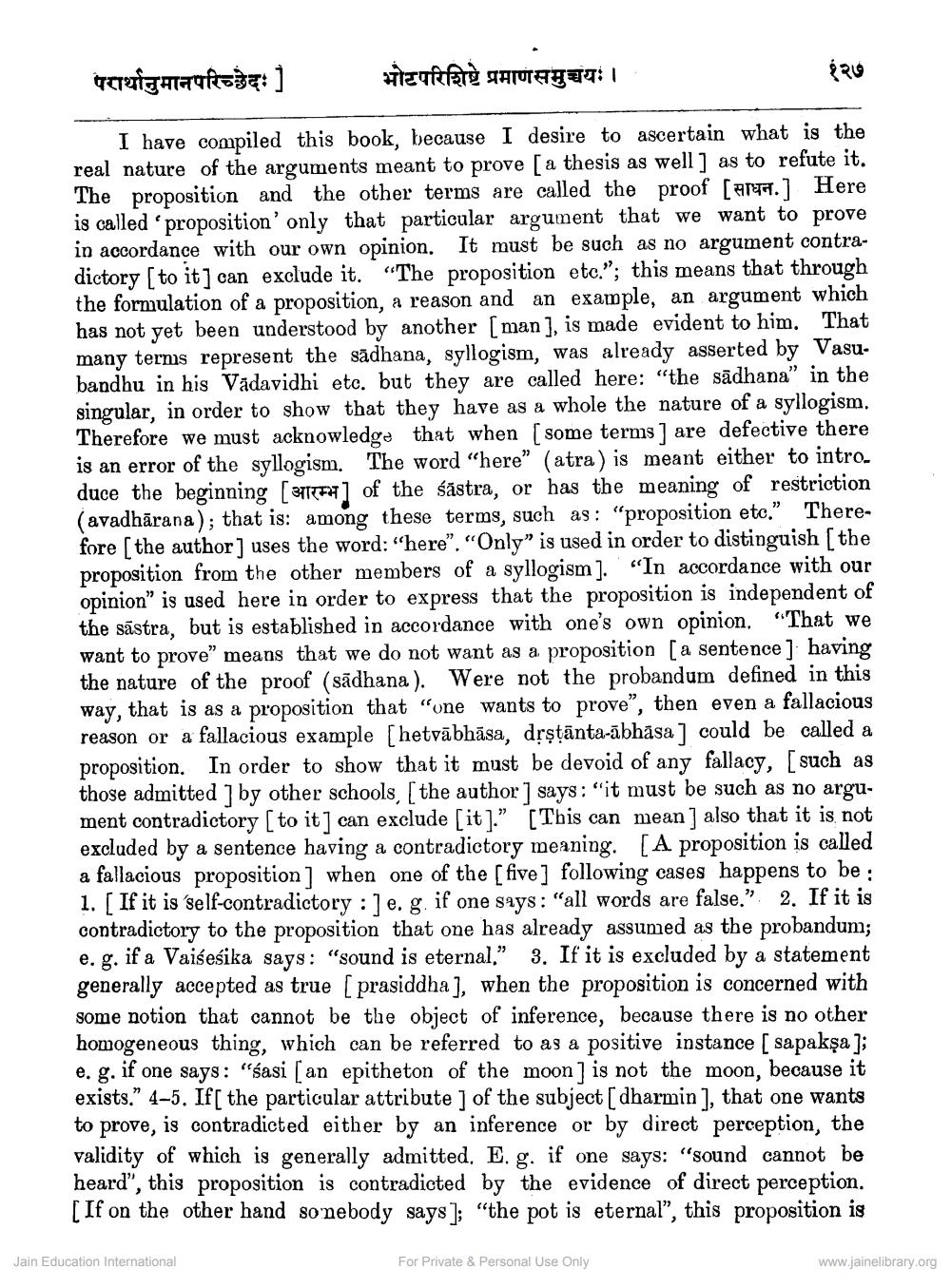________________
परार्थानुमानपरिच्छेदः]
भोटपरिशिष्टे प्रमाणसमुच्चयः ।
१२७
I have compiled this book, because I desire to ascertain what is the real nature of the arguments meant to prove [ a thesis as well] as to refute it. The proposition and the other terms are called the proof [ar ] Here is called 'proposition' only that particular argument that we want to prove in accordance with our own opinion. It must be such as no argument contradictory [to it] can exclude it. "The proposition etc."; this means that through the formulation of a proposition, a reason and an example, an argument which has not yet been understood by another (man), is made evident to him. That many ternis represent the sādhana, syllogism, was already asserted by Vasubandhu in his Vādavidhi etc. but they are called here: "the sādhana" in the singular, in order to show that they have as a whole the nature of a syllogism. Therefore we must acknowledge that when some terms) are defective there is an error of the syllogism. The word "here” (atra) is meant either to introduce the beginning [37] of the săstra, or has the meaning of restriction (avadhārana); that is: among these terms, such as: "proposition etc." Therefore (the author] uses the word: "here". "Only” is used in order to distinguish (the proposition from the other members of a syllogism]. "In accordance with our opinion" is used here in order to express that the proposition is independent of the sāstra, but is established in accordance with one's own opinion. "That we want to prove" means that we do not want as a proposition (a sentence] having the nature of the proof (sādhana). Were not the probandum defined in this way, that is as a proposition that "one wants to prove", then even a fallacious reason or a fallacious example [hetvābhāsa, drstänta-ābhāsa ] could be called a proposition. In order to show that it must be devoid of any fallacy, such as those admitted by other schools, (the author ] says: "it must be such as no argument contradictory [to it) can exclude [it]." [This can mean] also that it is not excluded by a sentence having a contradictory meaning. [A proposition is called a fallacious proposition] when one of the [five] following case 1. If it is 'self-contradictory :) e. g if one says: "all words are false.” 2. If it is contradictory to the proposition that one has already assumed as the probandum; e. g. if a Vaiseśika says: "sound is eternal," 3. If it is excluded by a statement generally accepted as true ( prasiddha], when the proposition is concerned with some notion that cannot be the object of inference, because there is no other homogeneous thing, which can be referred to as a positive instance ( sapakşa ]; e. g. if one says: "sasi [an epitheton of the moon is not the moon, because it exists." 4–5. If[ the particular attribute ) of the subject (dharmin), that one wants to prove, is contradicted either by an inference or by direct perception, the validity of which is generally admitted. E. g. if one says: “sound cannot be heard”, this proposition is contradicted by the evidence of direct perception. [If on the other hand so nebody says; "the pot is eternal", this proposition is
Jain Education International
For Private & Personal Use Only
www.jainelibrary.org




